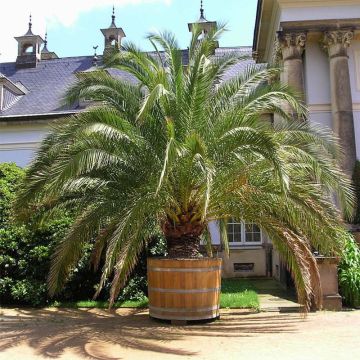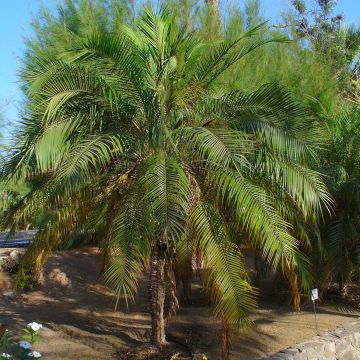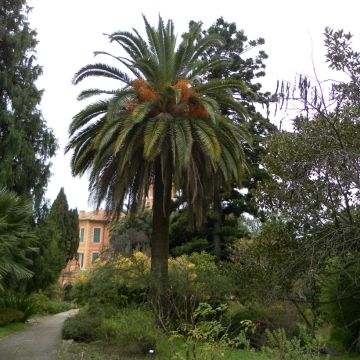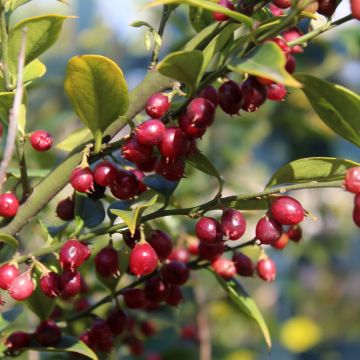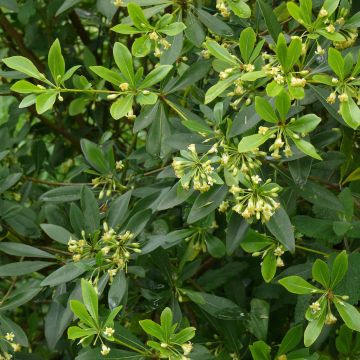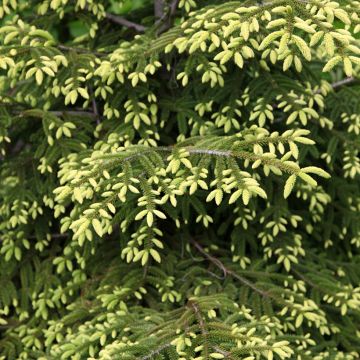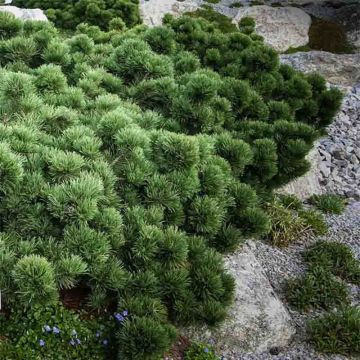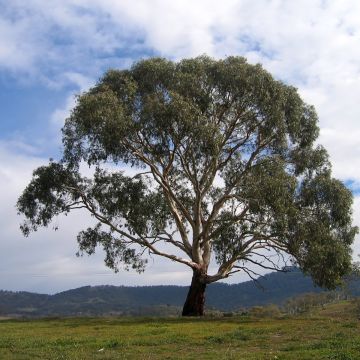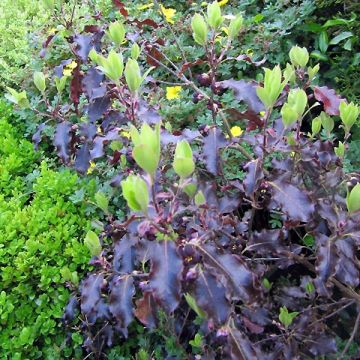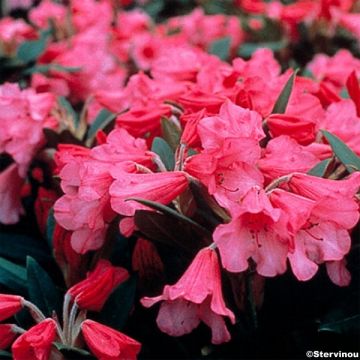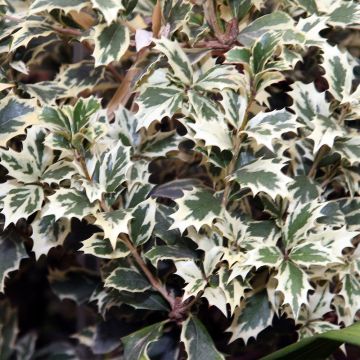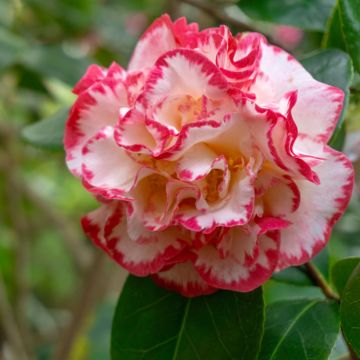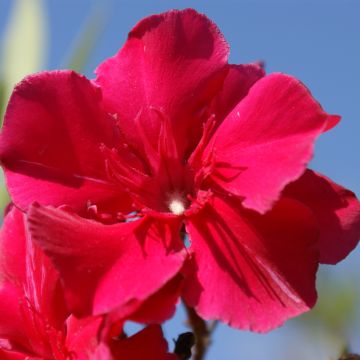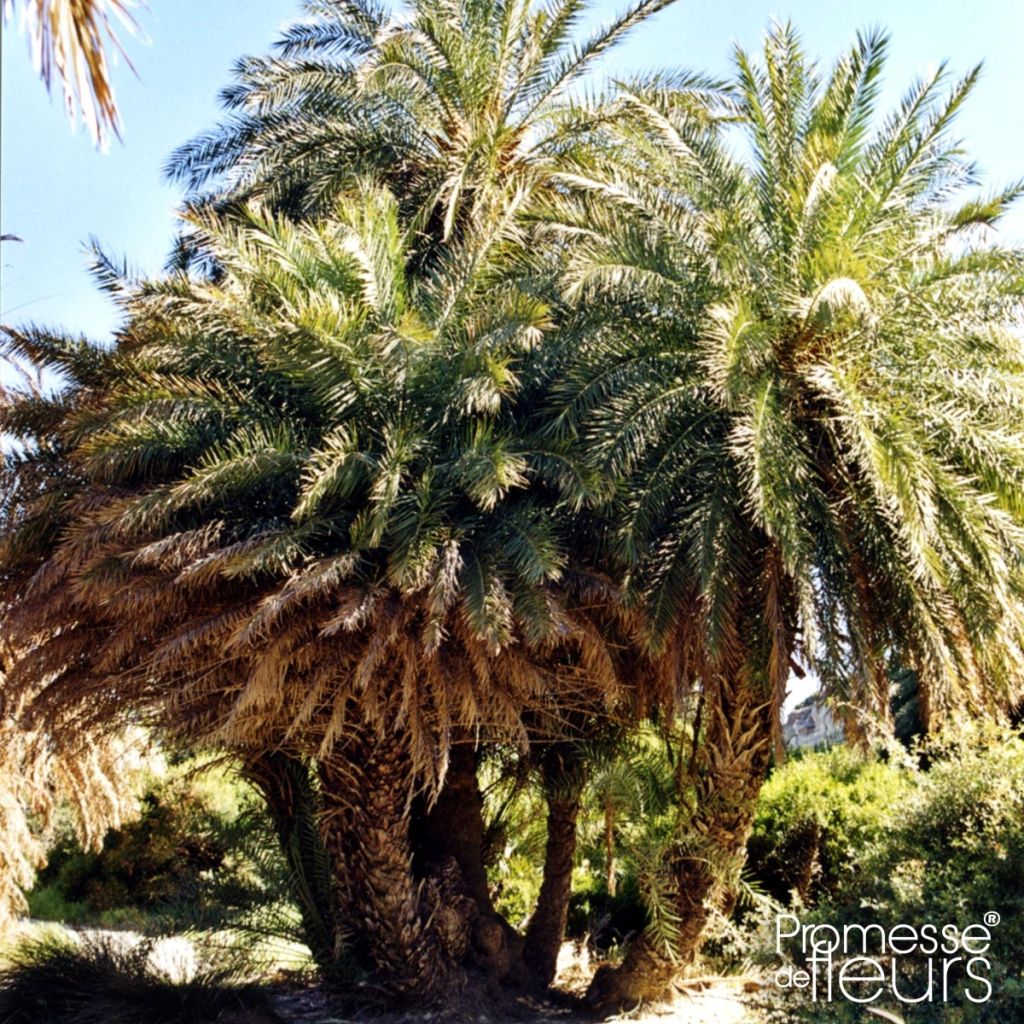

Phoenix theophrasti - Palmier dattier de Crète
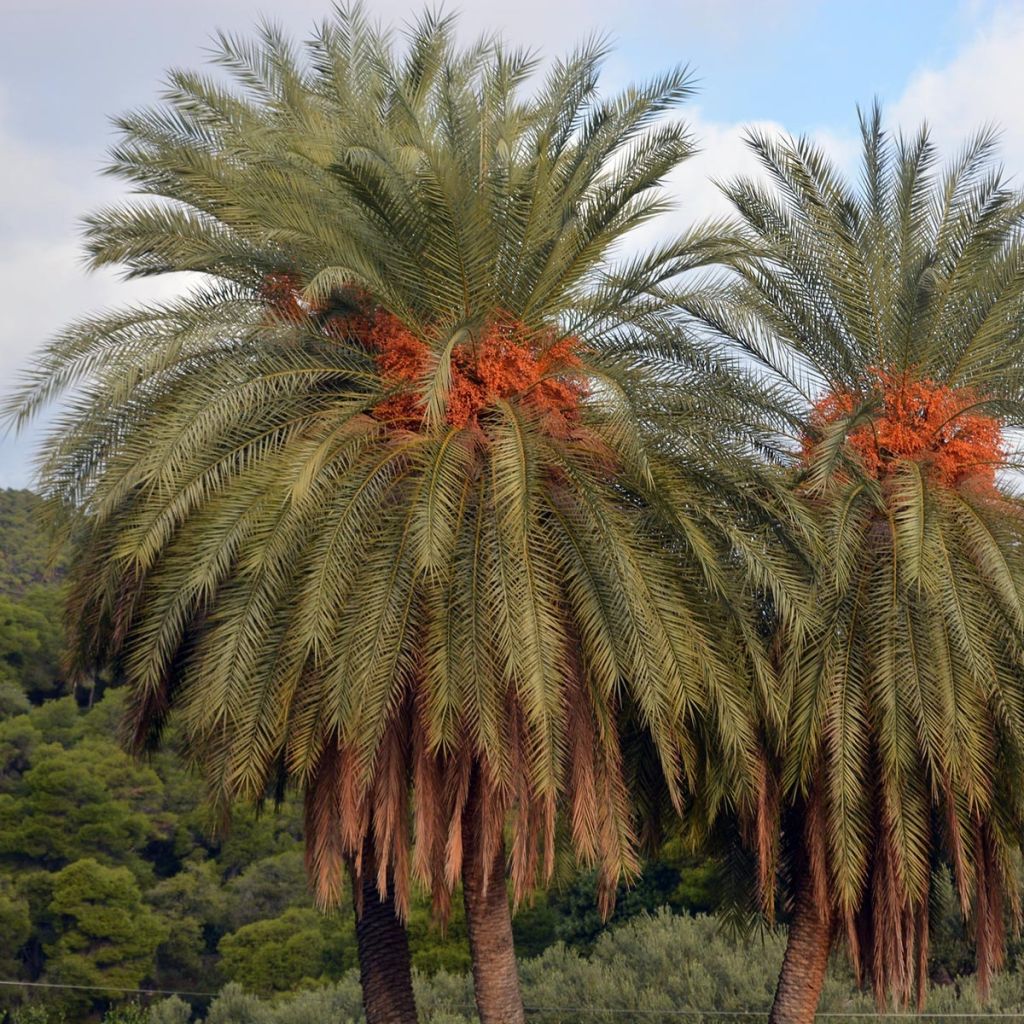

Phoenix theophrasti - Palmier dattier de Crète
Phoenix theophrasti - Cretan Date Palm
Phoenix theophrasti
Cretan Date Palm
Why not try an alternative variety in stock?
View all →This plant carries a 24 months recovery warranty
More information
We guarantee the quality of our plants for a full growing cycle, and will replace at our expense any plant that fails to recover under normal climatic and planting conditions.
From €5.90 for pickup delivery and €6.90 for home delivery
Express home delivery from €8.90.
Delivery to Corse prohibited: UE law prohibits the import of this plant from mainland France to Corse as part of the fight against Xylella fastidiosa. Please accept our sincere apologies.
More information
Does this plant fit my garden?
Set up your Plantfit profile →
Description
The Phoenix theophrasti is, along with the Chamaerops humilis (the dwarf palm), the only representative of the great family of palm trees that is native to Europe. This species, commonly called the Cretan date palm, is very similar to the Phoenix dactylifera of Saharan oases, which is cultivated for date harvesting. It has a sturdier appearance than its African cousin, developing over time several curved "trunks" topped with a lush foliage of soft green-gray-blue palm leaves, forming picturesque groves when planted in the ground. Another advantage of this Phoenix is its good resistance to frost, which should allow it to thrive in many gardens not too far from the sea.
The Phoenix theophrasti belongs to the great family of Arecaceae. It is endemic to Crete, where it is protected, but it can also be found in southwestern Turkey. This species grows near the shores or in the beds of dried-up rivers, where water is present in depth. Like the date palm, it requires a lot of heat for its fruits to ripen. This Cretan date palm shows rapid growth when planted in the ground, and can withstand cold temperatures down to -12°/-13°C. However, it requires deep, light, preferably sandy, well-drained soil that is moist in depth. In favorable climate and soil conditions, the plant can reach a height of 13 m (43ft). In containers, it will remain smaller in size, although this cultivation method is not recommended for this plant as it tends to produce many suckers from the stump.
The Cretan date palm is capable of forming multiple stems, or false trunks, from its base. Each stem, which can reach a diameter of 50 cm (20in) at the base, is brown-gray in color and covered with short fibers and a pattern of prominent diamond-shaped motifs, which are remnants of the old petioles that have been cut. At the top of each stem, the foliage develops, forming a rather dense crown. The leaves are fleshy and spiky, resembling fish bones, and have a glaucous color. These evergreen leaves have an individual lifespan of 3 to 7 years. Each leaf is divided into 200 to 250 rigid pinnae, irregularly arranged along the central vein. Flowering occurs in summer, on mature plants. The Phoenix theophrasti is a dioecious species, meaning that there are male and female individuals. Only the female plants will bear dates in the presence of male plants. In our region, including the Mediterranean, it does not produce many or high-quality dates. The female plants produce clusters of small, fleshy, and edible fruits, which are initially brownish-yellow and then turn black when ripe. Each fruit contains only one elongated seed with a furrow.
The Phoenix theophrasti can be a magnificent specimen in many French gardens. As it requires space to fully express its beauty, this palm tree is best planted on a short grass meadow in a not too cold climate, both near the sea and inland. It can sometimes be challenging to pair with other plants due to its strong personality; reserve a corner for it by a pool and plant robust ground covers such as periwinkles or snow-in-summer, for example, at its base.
Report an error about the product description
Phoenix theophrasti - Cretan Date Palm in pictures
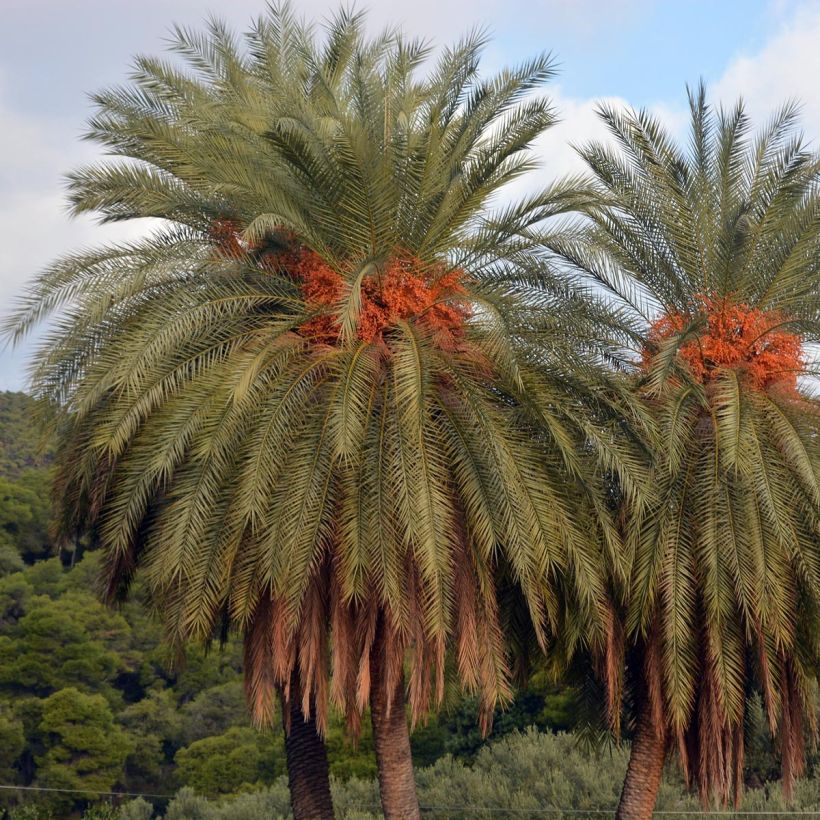

Plant habit
Flowering
Foliage
Botanical data
Phoenix
theophrasti
Arecaceae
Cretan Date Palm
Mediterranean
Other Phoenix
Planting and care
This date palm Phoenix theophrasti shows rapid growth when planted in the ground, if regularly watered in summer. It requires sun and warmth, as well as a deep, moist soil. Plant it in the ground in not too cold climates. Growing it in a container is possible, but not very suitable for this species, which sprouts from the stump and produces an extensive root system. Capable of withstanding short freezes of around -12°C (10.4°F) in well-draining soil, this palm should still be protected in case of severe cold, by tying the crown of leaves tightly to protect the heart of the plant and by adding a thick mulch at the base. Plant in full sun, protected from cold and dry winds, in a light soil, ideally sandy or loamy, even poor and dry on the surface. The ideal is to plant it in a soil that retains little water; a mixture of coarse sand, compost, and garden soil. Water regularly for the first 3 years, especially if the summer is dry. The drought resistance of a well-established plant will need to be tested, as this palm is still very rarely planted in gardens. Easy to grow, it requires little maintenance except for pruning the oldest fronds close to the trunk.
Throughout the PACA region, south of France and in Spain, large palm trees are victims of parasites such as the notorious and widespread Paysandra archon, a large butterfly that is active even in England. Specific treatments are now available for preventive purposes. The red palm weevil (Rhynchophorus ferrugineus) has been present since 2006. The symptoms are as follows: fronds are cut, dried or yellowing. These pests attack numerous species of palm trees, with a fatal outcome; the leaves irreversibly and completely dry out as soon as the heart of the trunk hosts larvae.
Planting period
Intended location
Care
This item has not been reviewed yet - be the first to leave a review about it.
Evergreen shrubs
Haven't found what you were looking for?
Hardiness is the lowest winter temperature a plant can endure without suffering serious damage or even dying. However, hardiness is affected by location (a sheltered area, such as a patio), protection (winter cover) and soil type (hardiness is improved by well-drained soil).

Photo Sharing Terms & Conditions
In order to encourage gardeners to interact and share their experiences, Promesse de fleurs offers various media enabling content to be uploaded onto its Site - in particular via the ‘Photo sharing’ module.
The User agrees to refrain from:
- Posting any content that is illegal, prejudicial, insulting, racist, inciteful to hatred, revisionist, contrary to public decency, that infringes on privacy or on the privacy rights of third parties, in particular the publicity rights of persons and goods, intellectual property rights, or the right to privacy.
- Submitting content on behalf of a third party;
- Impersonate the identity of a third party and/or publish any personal information about a third party;
In general, the User undertakes to refrain from any unethical behaviour.
All Content (in particular text, comments, files, images, photos, videos, creative works, etc.), which may be subject to property or intellectual property rights, image or other private rights, shall remain the property of the User, subject to the limited rights granted by the terms of the licence granted by Promesse de fleurs as stated below. Users are at liberty to publish or not to publish such Content on the Site, notably via the ‘Photo Sharing’ facility, and accept that this Content shall be made public and freely accessible, notably on the Internet.
Users further acknowledge, undertake to have ,and guarantee that they hold all necessary rights and permissions to publish such material on the Site, in particular with regard to the legislation in force pertaining to any privacy, property, intellectual property, image, or contractual rights, or rights of any other nature. By publishing such Content on the Site, Users acknowledge accepting full liability as publishers of the Content within the meaning of the law, and grant Promesse de fleurs, free of charge, an inclusive, worldwide licence for the said Content for the entire duration of its publication, including all reproduction, representation, up/downloading, displaying, performing, transmission, and storage rights.
Users also grant permission for their name to be linked to the Content and accept that this link may not always be made available.
By engaging in posting material, Users consent to their Content becoming automatically accessible on the Internet, in particular on other sites and/or blogs and/or web pages of the Promesse de fleurs site, including in particular social pages and the Promesse de fleurs catalogue.
Users may secure the removal of entrusted content free of charge by issuing a simple request via our contact form.
The flowering period indicated on our website applies to countries and regions located in USDA zone 8 (France, the United Kingdom, Ireland, the Netherlands, etc.)
It will vary according to where you live:
- In zones 9 to 10 (Italy, Spain, Greece, etc.), flowering will occur about 2 to 4 weeks earlier.
- In zones 6 to 7 (Germany, Poland, Slovenia, and lower mountainous regions), flowering will be delayed by 2 to 3 weeks.
- In zone 5 (Central Europe, Scandinavia), blooming will be delayed by 3 to 5 weeks.
In temperate climates, pruning of spring-flowering shrubs (forsythia, spireas, etc.) should be done just after flowering.
Pruning of summer-flowering shrubs (Indian Lilac, Perovskia, etc.) can be done in winter or spring.
In cold regions as well as with frost-sensitive plants, avoid pruning too early when severe frosts may still occur.
The planting period indicated on our website applies to countries and regions located in USDA zone 8 (France, United Kingdom, Ireland, Netherlands).
It will vary according to where you live:
- In Mediterranean zones (Marseille, Madrid, Milan, etc.), autumn and winter are the best planting periods.
- In continental zones (Strasbourg, Munich, Vienna, etc.), delay planting by 2 to 3 weeks in spring and bring it forward by 2 to 4 weeks in autumn.
- In mountainous regions (the Alps, Pyrenees, Carpathians, etc.), it is best to plant in late spring (May-June) or late summer (August-September).
The harvesting period indicated on our website applies to countries and regions in USDA zone 8 (France, England, Ireland, the Netherlands).
In colder areas (Scandinavia, Poland, Austria...) fruit and vegetable harvests are likely to be delayed by 3-4 weeks.
In warmer areas (Italy, Spain, Greece, etc.), harvesting will probably take place earlier, depending on weather conditions.
The sowing periods indicated on our website apply to countries and regions within USDA Zone 8 (France, UK, Ireland, Netherlands).
In colder areas (Scandinavia, Poland, Austria...), delay any outdoor sowing by 3-4 weeks, or sow under glass.
In warmer climes (Italy, Spain, Greece, etc.), bring outdoor sowing forward by a few weeks.

































